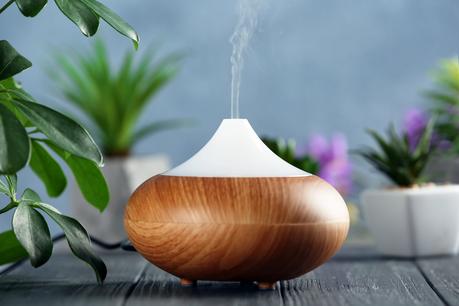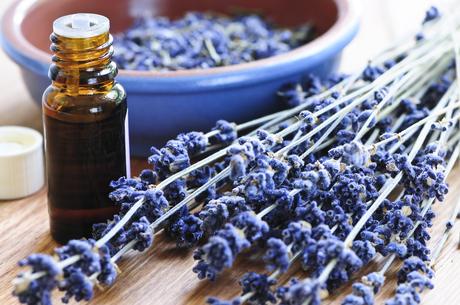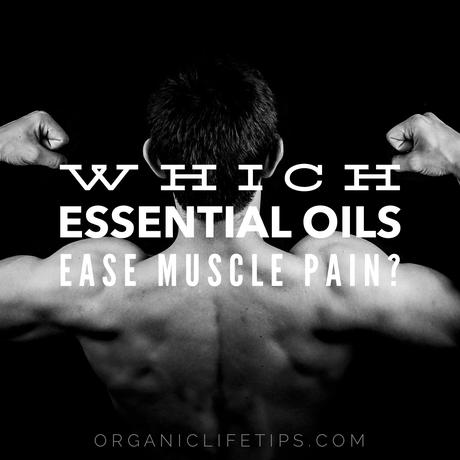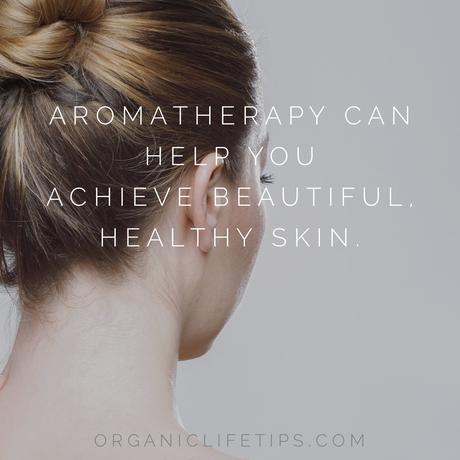
Wouldn't you love your home, your office, the space around you, to be filled with the "essence of life."
Sounds invigorating, right?
Well... you sort of can. Aromatherapy is the practice of diffusing essential oil particles into the air around you and then breathing them in.
And essential oils are essentially the essence of plants. (I re-read that and it actually makes sense.)
Let me explain.
An essential oil is a highly concentrated, easily evaporated liquid extracted from the bark, flowers, leaves, fruit, or stems of plants. Because of the high concentration of the compounds in these oils, they have been used as a form of alternative medicine for centuries.
History Of Aromatherapy
Essential oils have been used medicinally for over 6,000 years. There is evidence that these healing oils were used in perfumes, medicines, and cosmetics by the ancient Greeks, Chinese, Egyptians, Indians and Romans.
Okay so hold on... let me rephrase here... Back when it started, aromatherapy wasn't exactly alternative medicine. It was their mainstream medicine. It's not like they could choose to go to pharmacy and pick up some advil instead of using lavender oil for their headache.
Plants, herbs, and oils were their actual medicine.
In 2697 BC the oldest ever medical text was written in China. It's called The Yellow Emperor's Classic of Internal Medicine. This text describes the traits and medical uses of 300 different plants.
The Egyptians were using essential oils to keep their skin supple and protect against drying and ageing way before Neutrogena was even a thought. They also perfumed their bodies with oils heavily and even used essential oils to preserve, mummify, their dead in hopes of obtaining everlasting life.
Origin of Modern Arometherapy
The story of modern aromatherapy for medicinal purposes starts with Rene-Maurice Gattefosse, a chemist from France, who used essential oil from lavender to treat the burns he suffered on his hand from an explosion in the laboratory in 1910.
Upon getting positive results, he started analyzing the chemical properties of different essential oils and found out about their skin-healing properties. Gattefosse used the resources available to him in his family's perfumery to distill many types of oils and apply them to healing various skin conditions from facial ulcers to spider bites.
He was also an active advocate for lavender farmers and helped to develop sound cultivation and distillation methods. He wrote a book called Aromathérapie: Les Huiles Essentielles Hormones Végétales, which translated to English as Aromatherapy... and that's the long story of the origin of the word we use now.
Essential oils went on to become a common tool in the medical community. They were even used by medics during World War I to treat skin infections, burns, wounds, and gangrene on soldiers.
But soldiers and medical professionals weren't the only ones utilizing these potent plant extractions.
Witches used essential oils to cast spells.
Need a little help in the love department? Apparently a simple potion using cardamom oil will have the object of your desire eating out of the palm of your hand. I haven't tried that one (I've been married for a long time), but who knows? Could be worth a shot.

Most people think of aromatherapy as just the kind where you diffuse the oil into the air. However, you can also rub it on, wipe it on, and bathe in it. We'll call those collectively topical aromatherapy.
First, let's talk about the airborne variety.
Diffusing Essential Oils
When you inhale the tiny particles of an essential oil that are floating around in the air, your limbic system is stimulated. This is the part of your brain responsible for things like mood and memory.
Your hypothalamus is the part of your limbic system responsible for controlling the secretion of chemicals like serotonin, the feel-good hormone. And, the hypothalamus just so happens to respond to olfactory stimuli- which means you can use aromatherapy to help you feel better.
Essential oil diffusers are used to spread the fragrance of herbs and oils
Treating Stress, Anxiety & Depression
One of the many health benefits of aromatherapy is the therapeutic value in the treatment of depression, stress, and anxiety.
Stress and anxiety can be symptoms of depression, but they don't all necessarily have to be comorbid.
One big difference between depression and stress or anxiety is duration. Stress can be fleeting- like you have a deadline with one hour to do three hours of work and you're kind of freaking out. Anxiety can also be temporary and situational.
But sometimes these symptoms impact your life so heavily that you suffer socially and emotionally, and often physically, from them. This could mean that a group of symptoms has culminated in depression.
New studies show that aromatherapy can provide relief from many symptoms of depression - which is one of the largest health concerns of the 21st century.
Someone close to you likely suffers from depression and you don't even realize it. Or you may suffer from depression yourself.
Signs of depression can include fatigue, mood swings, lethargy, lack of interest in life, low self-esteem, low libido, loss of appetite, heightened stress, and anxiety.
Signs of depression are not always extreme or obvious.
While essential oils are not a substitute for therapy or psychiatric intervention, they can provide some relief from symptoms as part of a well thought treatment plan.
Bergamot
Bergamot oil is incredibly stimulating and can quickly increase feelings of happiness while simultaneously decreasing anxiety levels.
A study conducted at the Srinakharinwirot University in Thailand shows a direct correlation to the administration of Bergamot oil to a decrease in stress and anxiety levels in its subjects.
Another study found that a blend of Bergamot and Lavender oils lowered the pulse of the participants, indicating a calming effect by this particular oil blend.
Ylang Ylang
Ylang Ylang oil works a little differently than Bergamot. Rather than inspiring feeling of joy and excitement, this essential oil relaxes you.
Diffusing ylang ylang oil provides rapid relief from symptoms of stress and anxiety, instilling a greater sense of calm and peace.
Chamomile
Chamomile is the main ingredient in Sleepy Time Tea, and there's good reason for it. Double-blind, placebo-controlled studies and anecdotal evidence (had a cup of tea myself last night) show the relaxing effect of chamomile on your body and mind.
You can read all about the extensive medicinal properties of chamomile in this article published by Pharmacognosy Review: Chamomile, An Overview.
Let's just say chamomile apparently treats everything from flatulence to insomnia. I'd highly recommend stocking up.
Chamomile apparently treats everything from flatulence to insomnia I'd highly recommend stocking up! TWEET
Lavender
Lavender oil is an incredible therapeutic tool. This essential oil has been well-documented as effective in treating and preventing postpartum depression, post-traumatic stress disorder ( PTSD), and general symptoms of depression, stress and anxiety ( 1, 2, 3).
Test the oils. Put 6 - 8 drops of your chosen essential oil into your diffuser, fill with water, and breathe normally. For best results, run the diffuser for approximately 45 minutes in the room you're in.
After 45 minutes, the benefits begin to decrease and you're just wasting your oils. With a good quality diffuser, you can set a timer or turn it to a burst setting if you want to diffuse overnight.
Make this part of your daily routine for about a week and see how you feel. You could even keep a notebook, a journal of sorts, to track your response.
Topical Aromatherapy
I know what you're thinking... we started this conversation talking about healing burns and keeping skin soft. That's not happening from diffusing oil in into the air, right?
You are correct. Aromatherapy also has a topical application.
In addition to healing burns and keeping skin soft, the topical application of essential oils can heal symptoms of: nausea, headaches, muscle aches and pains, minor burns, skin ulcers, warts, acne, cramps, hives, eczema, and more.
Muscle Pain, Cramping & Nausea
The topical application of essential oils works best for relief from muscle pain, body ache, nausea, and cramping.

Peppermint, camphor, and eucalyptus have special analgesic and anti-inflammatory components that penetrate the skin and muscle tissue quickly.
Clove, cinnamon, and peppermint stimulate both the heat and cold receptors on your skin at the same time- making it feel like it's a lot hotter than it actually is. This hot-icy sensation instantly soothes the muscle while the anti-inflammatories kick in to actually calm and heal.
Peppermint, ginger, lavender, chamomile, fennel, and lemon all work well for nausea and menstrual cramps.
Try mixing 3 - 5 drops of any one of these oils, or a combination of them, with 2 tablespoons of a carrier oil. Jojoba oil, apricot oil, and even coconut oil work well.
Scoop up a quarter-sized dollop into your hand and rub into the affected area. Use a bit more pressure when massaging into muscle. For your abdomen, gentle massage is better.
Headache and Migraine

Headaches, including migraines, can be caused by a host of different triggers. These include, but are not limited to: hormone imbalance, low blood sugar, stress or anxiety, allergy, lack of sleep, dehydration, clogged sinuses.
Sometimes, you can pinpoint what kicked off your headache. But many chronic headache sufferers have no idea.
Fortunately, there are essential oils to treat most headache symptoms and they're safe to use in combination with one another - unlike most prescriptions.
Here are some common headaches and how to treat their symptoms with a topical application of essential oils.
Sinus Headaches
Sinus headaches happen when your sinuses are clogged with mucus from allergy or infection. Oils such as eucalyptus, rosemary, tea tree, pine, and clove will help break up and expel the mucus, easing the pressure.
Combine a few drops of one or more of the oils with carrier oil and rub into your chest, front and back of your neck, and your upper back.
Tip: Smell your hands when you're done. Breathe deep. It will clear out your nose.Sugar Headaches
Sugar headaches happen when you haven't eaten (or haven't eaten properly) and your blood sugar drops. Mix rosemary and lavender oils with a carrier and rub into your temples and neck.
Or, eat some soup with a drop of rosemary oil in it. (Really, you need to eat anyway if your blood sugar dropped. Just eating is probably going to help.)
Stress Headaches
Stress Headaches are literally "feeling the pressure." They are a reminder that our bodies and minds are connected. You'll feel this kind of dull pain in the front of your head and your temples.
Use a little dab of peppermint oil or eucalyptus oil on your wrists and temples. If you've used these oils before, you won't need a carrier for such a small amount. But make sure you've tested the oil first.
You want to make sure you don't have a reaction to it, as pure essential oils can be very strong.
For stress headache prevention, see the info on stress and anxiety above!
Migraine Headaches
Migraine Headaches are severe and come with a lot of different symptoms, including nausea, ocular distortion, throbbing pain, and sensitivity to light.
Use the nausea aromatherapy mentioned above to combat that symptom, and then rub lavender and peppermint oil on your temples and neck for the pain.
For migraine prevention, use lavender oil either topically or in the diffuser to get a good night's sleep, stay hydrated, and reduce stress and anxiety by one of the methods mentioned above.
Skin Conditions

Topical aromatherapy works well to treat a lot of common skin conditions. So, rather than spend a ton of money on astringents for acne and creams for age spots, try these treatments instead:
Acne
Mix 1 - 2 drops of tea tree oil into a teaspoon of jojoba oil. Smooth it over your face, back, chest or any area infected with acne. Let is sit a few minutes and then rinse with warm water.
Tip: Keep this mixture in the shower if you have body acne. This way it becomes a simple part of your routine.Warts
Apply a tiny amount of tea tree oil to warts 3 times a day. At night, for deep treatment, apply the oil and then cover with a bandage, or even just with socks if the wart is on your foot.
Did you know warts are viral? Tea tree oil has antiviral as well as antibacterial and antifungal properties, making it highly effective in eradicating the condition. But please be patient, it can take several weeks to see the results.
Age Spots
Age spots are dark, flat spots on the skin that often appear as people get older. You can stimulate growth of new skin, greatly fading these spots, by using Frankincense.
Mix 2 drops of frankincense oil per tablespoon of carrier oil. Apply to spots and leave for 15 - 20 minutes before rinsing with warm water. Repeat twice daily.
Rosacea
Rosacea is a red, often bumpy inflammation on the skin typically on the cheeks, nose, chin and forehead. Alcohol, spicy foods, stress, and sun exposure are common triggers.
Chamomile oil relieves the symptoms of rosacea. Mix 3 drops of chamomile oil into ½ teaspoon warm carrier oil and apply to affected skin. Leave on thirty minutes and rinse with lukewarm water. Repeat 2 -3 times daily as needed.
Psoriasis
Psoriasis is an itchy, dry, rough skin patch that can pop up on pretty much any part of the body. There is no cure for this condition, but you can find some relief with neem oil.
Mix a few drops of neem oil into a carrier oil, like coconut oil, and rub into affected areas. Allow to dry naturally for about thirty minutes and then rinse with warm water.
You can use this same formula for scalp and nail psoriasis. Repeat the treatment as needed.
Strengthening Your Immune System
Essential oils all have properties that will help to boost your immune system and help you feel healthier and more balanced. These properties include antiviral, antifungal, antiseptic, and anti-inflammatory components.
Your immune system is like a little army, and it can only battle so many opponents at once. If there are too many, your immune system won't be able to handle them all and it's going to need some help. Or, you're going to get sick.
To keep your system strong, try working essential oils like tea tree, clove, lemon, lavender, cinnamon, eucalyptus, and frankincense into your daily routine. Or, you can purchase an immune booster blend.
We already have a great article on this site about how to do that: Got Essential Oils. Now What? 5 Tips to Getting More Essential Oils into Your Life. It's as easy as switching your expensive toxic cleaners (which compromise your immune system) to making your own with simple ingredients and oils.
How to Find an Aromatherapist?
So, now you know a lot about the health benefits of aromatherapy and you can give it a shot. But, what if you have a serious health condition or you're struggling to find exactly what you need and in the right dosage?
Maybe you have a question about oil purity or application. You can seek out the help of a trained aromatherapist.
Try contacting one of the following organizations, or searching their database, for a reputable aromatherapist near you:
Have you tried aromatherapy? Share your experience, tips, tricks, favorite oils, with us in a comment below.
And don't forget to share this article with your friends and family. Who knows, it might give them the exact information they need on their own health journey.

